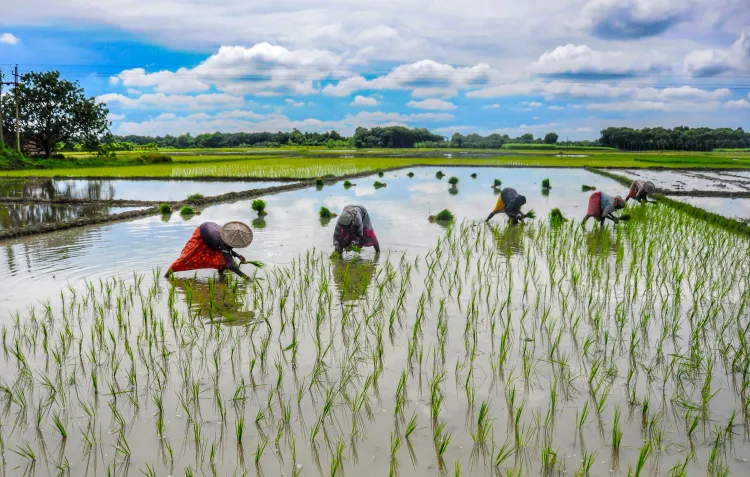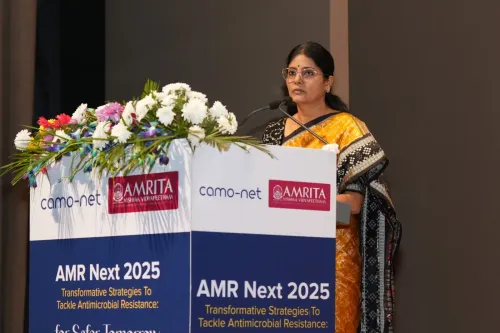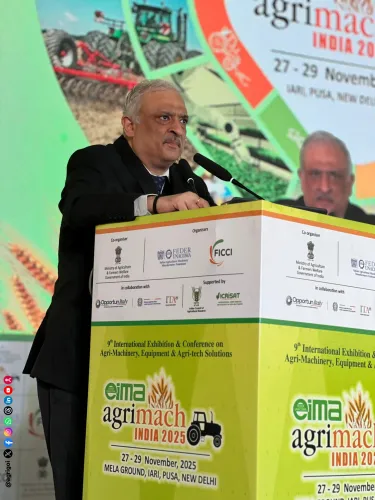Have 78.41 Crore Applications Been Insured Under PMFBY?

Synopsis
Key Takeaways
- 78.41 crore applications insured under PMFBY.
- Rs 1.83 lakh crore claims paid since 2016.
- Farmer enrollment increased by 32%.
- Coverage expanded from 371 lakh to 1,510 lakh applications.
- Maximum premium for farmers capped at 2%.
New Delhi, Aug 12 (NationPress) The Pradhan Mantri Fasal Bima Yojana (PMFBY) has successfully insured 78.41 crore applications and disbursed Rs 1.83 lakh crore in claims since its inception in 2016, based on the most recent government statistics.
Farmer participation surged by 32 percent, climbing from 3.17 crore in 2022–23 to 4.19 crore in 2024–25, marking the highest enrollment since the program's launch.
The number of non-loanee farmer applications skyrocketed from 20 lakh in 2014–15 to 522 lakh in 2024–25, indicating broader acceptance of the initiative.
Initiated on February 18, 2016, PMFBY is designed to deliver farmers a straightforward, cost-effective, and all-encompassing crop insurance solution.
This scheme safeguards farmers against crop failures due to unavoidable natural calamities such as droughts, floods, cyclones, hailstorms, pest infestations, and plant diseases.
PMFBY encompasses the entire agricultural cycle, from pre-sowing to post-harvest, including damage incurred during storage due to declared disasters. It provides prompt financial assistance, enabling farmers to manage risks and avoid debt traps.
Compared to previous crop insurance schemes, the coverage of farmer applications has expanded significantly, rising from 371 lakh in 2014-15 to 1,510 lakh in 2024-25.
Recognizing the scheme's success and promise, the Union Cabinet approved the continuation of PMFBY and the Restructured Weather Based Crop Insurance Scheme until 2025-26, with a total allocation of Rs 69,515.71 crore.
Furthermore, PMFBY has become the world's largest crop insurance initiative in terms of farmer applications. Additionally, numerous states have eliminated the farmer's premium share, notably easing the financial strain on farmers and promoting greater participation in the scheme.
Under this scheme, the maximum premium for farmers is capped at 2 percent for Kharif food and oilseed crops, 1.5 percent for rabi food and oilseeds, and 5 percent for annual commercial or horticultural crops.
The remaining portion of the actuarial premium, ranging from 95 percent to 98.5 percent, is jointly funded by the Central and State governments on a 50:50 basis, with exceptions for Northeastern and Himalayan states where the ratio is 90:10 from Kharif 2020 and Kharif 2023, respectively.










